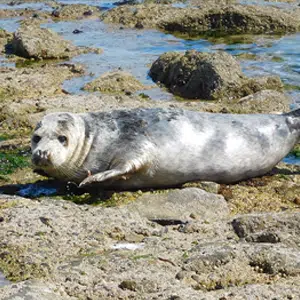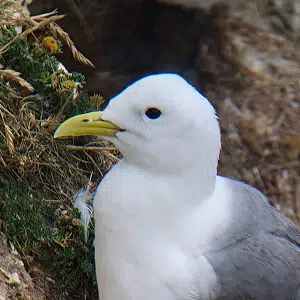Yorkshire’s wildlife and habitats are special and can be sensitive to a wide range of human activities. We need everyone’s help to make sure that our coastline is cared for and our wildlife is given the space it needs to thrive.
Recording Wildlife DisturbanceLeave nothing but footprints
Litter on the coast is a danger to our wildlife. Dispose of all rubbish in public bins or take it home with you. Find out what we’re doing to support marine litter projects here.
Take nothing but pictures
Exploring rock pools is part of the fun, but remember to return all wildlife to where you found it and replace any rocks you have overturned. Some areas are highly-protected, like the Flamborough Head No Take Zone.
Give our wildlife space
The Yorkshire coast is an important breeding and feeding area for a wide range of wildlife. Disturbance by humans can cause them to become stressed, stop feeding, abandon their young or get injured. Please give all wildlife space, whether you’re on the sea or at the beach.
Know before you go
Check out the specific guidance below before you head to the coast, so you know what to expect.
Flamborough and Filey Coast Personal Watercraft (Jet Skis) Code of Conduct
RSPB Bempton Cliffs Angling Code of Conduct
Marine Mammals at Sea (Yorkshire Wildlife Trust)
Watching Seals Safely (Seal Alliance)
Caring for our Coast
Wildlife on the Yorkshire coast is under pressure from our changing climate and human activities on a national, and international, scale. Whilst major environmental changes are beyond the control of a single person, we can all reduce our individual impacts on wildlife when we’re at the coast.
Wildlife can be disturbed from their natural behaviours in many different ways, but recreational activities, on the shore or at sea, can cause significant distress to sensitive species if not carried out responsibly. Some areas along the coast are specifically protected for wildlife, so make sure you’re aware of any local restrictions, before you go.
The best way to protect our wildlife is to know what disturbance looks like, and how to avoid it.
Operation SeabirdSpace
Leave at least 100m between you and wildlife, or the cliffs/shore they are using. All wildlife can become stressed if you get too close, look out for changes in behaviour such as alarm calls, as well as sudden flights, movement or changes in direction. Remember to keep dogs on leads when in the vicinity of coastal wildlife. Never crowd or ‘box in’ wildlife, particularly when watching marine mammals or seals – be aware of how many other vessels and people are around you. Try to keep noise to a minimum, including any engine noise.
Speed
Slow down to a no-wake speed when you come across wildlife or when you’re getting close to any sensitive areas. Around seabird colonies, be aware of groups of birds rafting on the sea and maintain a no-wake speed within 300m of the shore.
Time
Allow animals to move away from you and do not pursue them; if disturbance behaviour is displayed move away from the area slowly and quietly. If it is safe to do so, enjoy a maximum of 15 minutes with the wildlife before moving on.
What are the impacts of disturbance?
On the sea
Fast moving vessels close to the shore can cause panic in breeding seabirds, causing them to use energy for flight which could otherwise be used to find food. Many of our seabirds lay their eggs directly on the rock face, so if the adults fly from the cliffs in alarm, it is highly likely that eggs and young chicks will be lost. Equally, slow moving craft can also scare sensitive species if you get too close or travel through enclosed spaces, like caves or archways.
Vessels travelling at speed also risk collisions with rafting seabirds and marine mammals, causing significant injury or even death. Dolphins, porpoise and whales can become stressed if there are too many vessels around them, or if they are pursued. Later in the summer, juvenile seabirds that are not yet able to fly are particularly vulnerable to fast-moving watercraft.
On the beach
Seals often spend time hauled out on beaches and rocky outcrops along the Yorkshire coast, giving them time to rest and for important social behaviours. They can be sensitive to people and dogs getting too close, causing seals to stampede back into the water. This creates stress and can cause significant injuries. Wading and shore birds also use areas of our coastline to feed and rest; they can often be disturbed by people, dogs and other activities such as low-flying aircraft.
In the air
Drones can cause seabirds to leave their nests in alarm, prevent shorebirds from feeding, and create stampedes amongst hauled-out seals. Be aware of any local restrictions to flying drones and make sure that you meet all of the Civil Aviation Authority’s regulations. For any drone flight, you will need land owner permission and, if you’re within an area protected for sensitive species like seabirds and shorebirds, you will require permission from Natural England. Additionally, low-flying aircraft, paragliders and paramotors can all cause distress to wildlife. Make sure that you’re aware of any sensitive sites before you launch and try to avoid them if you can, or, if you must fly over, maintain a height of more than 500ft.
Linked projects and further information…



